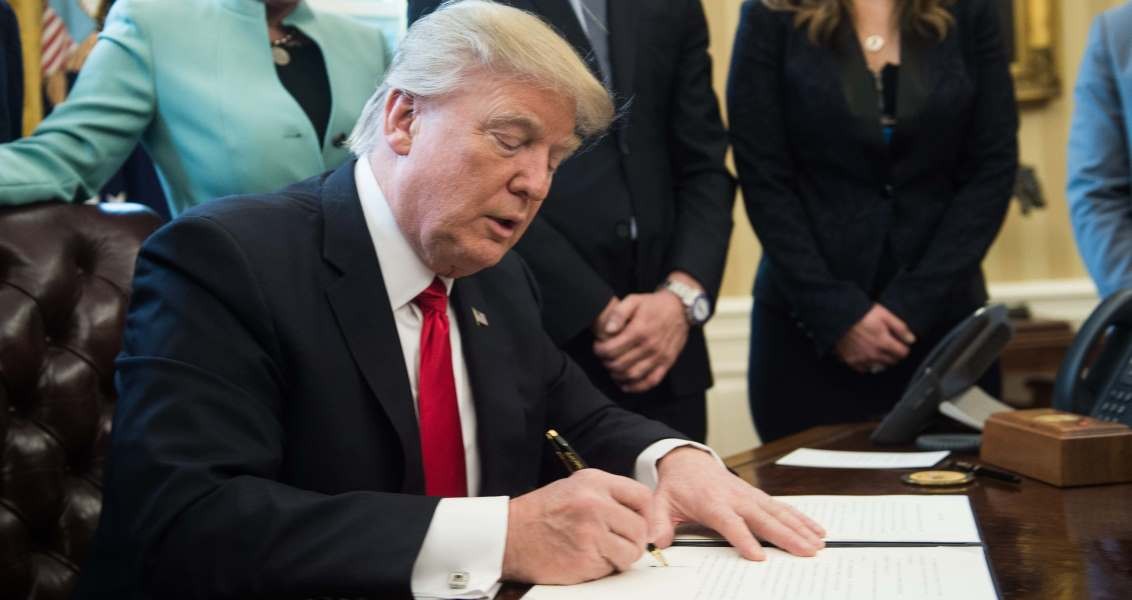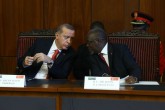In the aftermath of the Presidential Executive Order signed by U.S. President Donald Trump withdrawing the U.S. from the Trans-Pacific Partnership (TPP) deal, there is a set of questions about the possible ramifications of this decision to U.S. policy in Asia, the geopolitical consequences of such a decision and possible reactions to this order from Asian countries.
The first of these questions is about U.S. policy toward China during the Trump administration. As mentioned in this column previously, confusion exists about the real direction of the Trump administration’s policy toward China. Phone conversation between Trump and Taiwanese President Tsai Ing-wen and Trump’s tweets and Secretary of State Rex Tillerson’s statements during his testimony about the South China Sea raised concerns in some policy circles in regards to the rise of a more confrontational foreign policy. However, the withdrawal of the U.S. from the TPP, which excluded China from the initiative, was considered a victory for China by many observers. Accordingly, this would generate a major power vacuum in the region that may be filled by China. But still Trump’s position about keeping American jobs in America and his constant emphasis on unfair trade practices signals potential confrontation. President Trump even before he ran for president in an interview in 2011 mentioned the U.S. disadvantage in trade relations with China. His appointment of Peter Navarro, who is the author of books such as “Death by China: Confronting the Dragon,” “A Global Call to Action” and “The Coming China Wars: Where They Will Be Fought and How They Can Be Won,” and who is known for very critical views about the trade deficit between the U.S. and China as the head of the National Trade Council is also considered major preparation for a tough line with China in regards to trade. At least for now, the withdrawal from the TPP, although it was considered a geopolitical win for China, may launch different bilateral initiatives by the U.S. government that generate a period of tension in bilateral relations with China. Of course, this would also impact and influence the relations of the U.S. with its allies, such as Japan and South Korea.
The U.S. is likely to pursue bilateral trade agreements with countries in the region. However, many experts argue that although the U.S. may get slightly better deals with these bilateral trade agreements, it will not have the same type of geopolitical leverage that a multilateral trade agreement can have in the region. For the region, the TPP was more than a trade agreement and will be considered a missed opportunity. When the TPP started during the Obama presidency, it was applied as part of the Asia pivot strategy. “Economic statecraft” was considered a pillar of this strategy, and the U.S. intended to generate a more robust economic sphere of influence and economical bond with its allies in the region. Thus, the failure of this agreement will negatively affect the American posture and influence in the region. If China’s attempts to create a multilateral trade agreement in the region succeed, the geopolitical and geo-economical ramifications of the withdrawal from the treaty will increase dramatically. China’s President Xi Jinping already started to make his case as the defender of globalization during his speech at Davos last week. This speech and China’s effort in the Regional Comprehensive Economic Partnership agreement, which 16 countries in the region have been negotiating, demonstrate the significance of this new policy for China. In a statement after the withdrawal of the U.S. from the TPP, Senator McCain raised the risk of providing an advantage for China. He said: “President Trump’s decision to formally withdraw from the Trans-Pacific Partnership (TPP) is a serious mistake that will have lasting consequences for America’s economy and our strategic position in the Asia-Pacific region.” He also said, “It will send a troubling signal of the American disengagement in the Asia-Pacific region at a time we can least afford it.” A statement from Australia vaguely asserting a possible replacement of the U.S. with China to achieve the agreement also shows potential unexpected outcomes for the U.S. Although it was considered highly unlikely due to the mostly labor and environmental standards it brings, to have such a debate is important.
Of course from now on, there will be significant debates about the outcome of the end of the TPP and how to fix U.S. leverage in the region economically and geopolitically. Already weakened ties with allies in the region due to the failed Obama policies may get another hit
after the withdrawal if the Trump administration does not act quickly to fix these ties. Secretary of Defense James Mattis’ scheduled trips to Japan and South Korea will be the first step, but a military dimension alone may not be sufficient in the absence of an economic pillar. Of course in this new policy, on the one hand the Trump administration will try to overcome the perception that China is becoming the leader of trade liberalization in the region, while trying to resolve trade disputes bilaterally with China without any political escalation. Of course, during these negotiations and deliberations the administration will also face push and pull from the hawks in the administration and business groups that have an interest in China. Thus, there will be different balances and tightropes that the new administration must be ready for in the aftermath of its decision to withdraw from the TPP.
[Daily Sabah, January 30, 2017]
In this article
- Foreign Policy
- Opinion
- 2011
- 2017
- Australia
- CENTCOM
- China
- DAESH
- Daily Sabah
- Donald Trump
- East of the Euphrates
- Fight against DAESH
- Kurdistan Workers' Party Terrorist Organization (PKK)
- Middle East
- NATO
- NATO Ally
- Operation Euphrates Shield
- Peace Corridor
- People's Protection Units (YPG)
- PKK - YPG - SDF - PYD - YPJ - SDG - HBDH - HPG - KCK - PJAK - TAK - YBŞ
- Republic of Korea
- Safe Zone
- Syria
- Syrian Civil War
- Syrian Conflict
- Syrian Crisis
- Syrian Democratic Forces (SDF)
- Syrian National Army (SNA)
- Syrian National Coalition
- Syrian Opposition
- Syrian Refugees
- Taiwan
- Terror
- Terrorism
- TPP
- Trump Administration
- Trump’s Syria Withdrawal
- Turkish Foreign Policy
- Turkish-American Relations
- Türkiye-US Relations
- Türkiye-US Security Relations
- Türkiye's Operation Peace Spring
- Türkiye’s Operation Olive Branch
- United States (US)
- US President
- US Withdrawal from Syria
- US-PKK/PYD/YPG/SDF Relations
- US-Terror Relations
- Vladimir Putin



